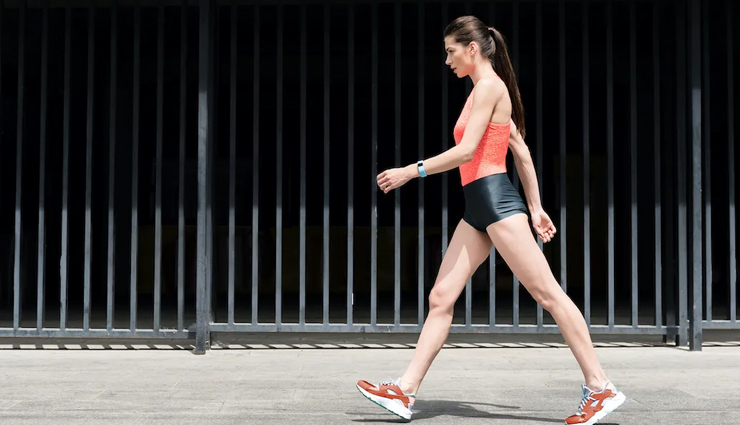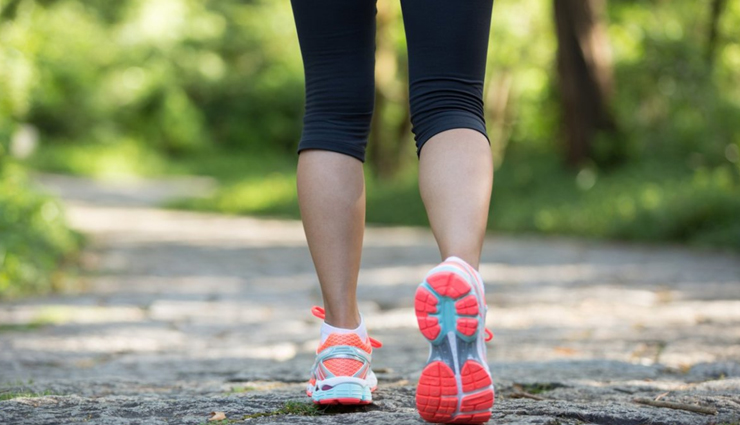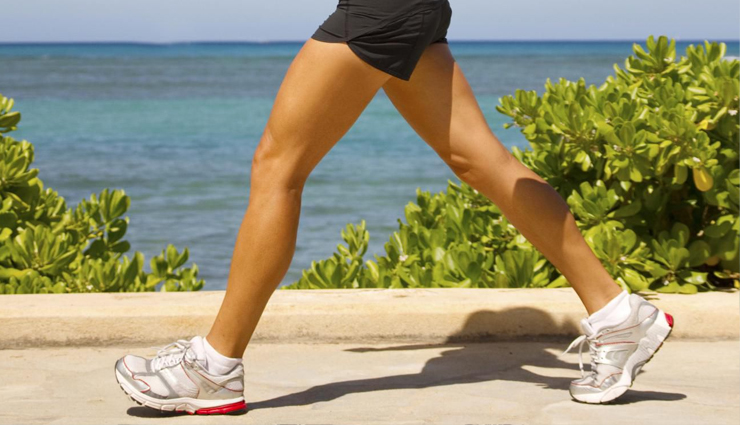- Home›
- Healthy Living›
- 8 Mistakes You Must Avoid While Brisk Walking
8 Mistakes You Must Avoid While Brisk Walking
By: Priyanka Maheshwari Wed, 23 Aug 2023 3:27:43

Brisk walking is a form of physical activity that involves walking at a faster pace than usual, typically faster than a leisurely stroll. It is considered a moderate-intensity aerobic exercise that offers numerous health benefits without the high impact associated with more intense workouts. Brisk walking is a simple and accessible activity that can be performed by people of varying fitness levels and ages.
During brisk walking, individuals maintain a pace that noticeably increases their heart rate and breathing while still allowing for comfortable conversation. This elevated heart rate stimulates the cardiovascular system, promoting better blood circulation and improving overall cardiovascular health. Additionally, brisk walking engages various muscle groups, including those in the legs, hips, core, and even the arms if the arms are actively swung during the walk.
One of the key advantages of brisk walking is its low impact on joints, making it suitable for individuals with joint issues or those who are new to exercise. Regular brisk walking has been linked to several health benefits, including weight management, improved mood, reduced stress, enhanced mental clarity, and a lower risk of chronic conditions such as heart disease, type 2 diabetes, and certain types of cancer.
Incorporating brisk walking into your routine can be as simple as taking a 30-minute walk at a pace that challenges you, several times a week. This can be done outdoors, on a treadmill, or in indoor spaces like malls or tracks. To gain the most benefits from brisk walking, it's important to maintain proper posture, wear comfortable and supportive footwear, and gradually increase your pace and duration over time.

# Overstriding
A frequent error often observed in beginners attempting brisk walking is overstriding, where they take overly long steps. This can result in various injuries like shin splints, knee discomfort, and hip ache. The act of overstriding places undue pressure on your joints, potentially causing discomfort and injury. Instead, aim for shorter steps and keep your feet closer to the ground. This approach will enable you to sustain a swifter pace while minimizing the strain on your joints.

# Not swinging your arms
The act of propelling your arms while engaging in brisk walking holds significance as it aids in maintaining equilibrium and preserving your forward motion. Neglecting arm swings can lead to an uneven distribution of weight and hinder your ability to increase your walking pace. Ensure that your arms are positioned near your torso, and rhythmically sway them in a fluid manner. Strive to maintain a 90-degree angle at your elbows, while also refraining from crossing your arms across your body's front.

# Incorrect posture
Sustaining proper posture during brisk walking holds paramount importance due to its role in averting injuries and refining your overall walking form. Refrain from slumping or inclining forward, as such actions could lead to undue strain on your back muscles. Instead, stand in an upright manner, drawing your shoulders backward and expanding your chest outward. Maintain a parallel alignment of your chin to the ground, directing your gaze forward rather than downwards towards your feet.

# Not wearing the right shoes
Donning appropriate footwear during brisk walking holds significance as it contributes to injury prevention and enhances the overall comfort of your walking session. It's imperative to ensure that your shoes offer proper support, ample cushioning, and an accurate fit. Steer clear of using shoes with deteriorated soles, as they can lead to foot fatigue and discomfort.

# Not warming up
Engaging in a warm-up routine before embarking on brisk walking holds significance, as it readies your body for physical activity and diminishes the likelihood of injury. Aim to allocate a minimum of 5-10 minutes to your warm-up before initiating your brisk walk. This can encompass gentle stretching, leisurely walking, or performing uncomplicated exercises to stimulate blood circulation and prepare your body for the subsequent activity.

# Walking too fast too soon
Commencing brisk walking at an excessively rapid pace prematurely can lead to bodily exhaustion and elevate the possibility of sustaining injuries. Begin with a gradual pace and progressively work your way towards higher speeds as time progresses. Endeavor to maintain a conversational pace that doesn't induce breathlessness. This measured approach allows your body to adapt and reduces the likelihood of overexertion or harm.
# Not cooling down
Engaging in a cool-down routine following brisk walking holds significance, as it contributes to the reduction of your heart rate and the prevention of muscle soreness. Strive to allocate a period of at least five to 10 minutes for cooling down after concluding your brisk walk. This can involve gentle stretching or transitioning to a slower walking pace, facilitating a gradual decline in heart rate and aiding in the prevention of muscle discomfort.

# Ignoring pain or discomfort
Disregarding pain or discomfort during brisk walking can result in severe injuries. If you encounter any sensations of pain or discomfort, it's crucial to cease walking promptly and take a moment to rest. Should the discomfort persist, it's advisable to seek medical assistance. Opting to pause and grant your body the opportunity to recover is preferable to persisting despite the pain, which could potentially exacerbate the injury and lead to further harm.





